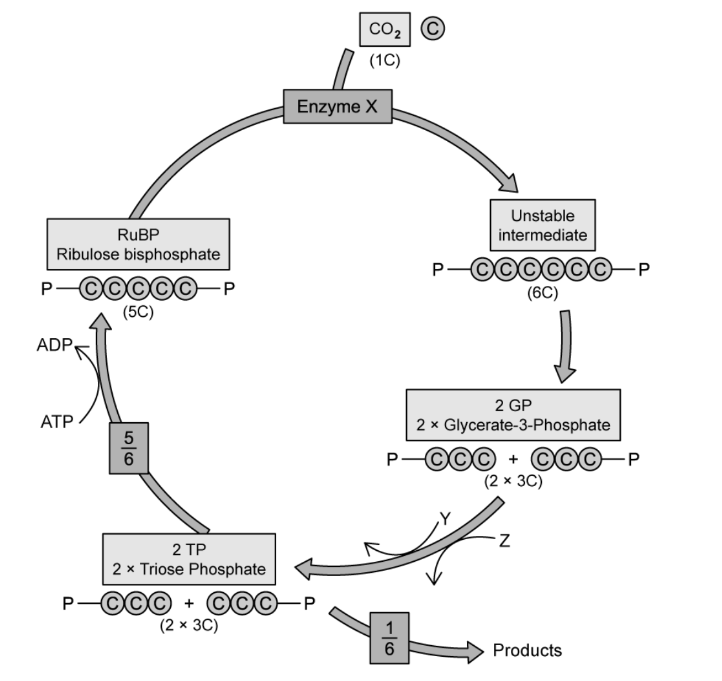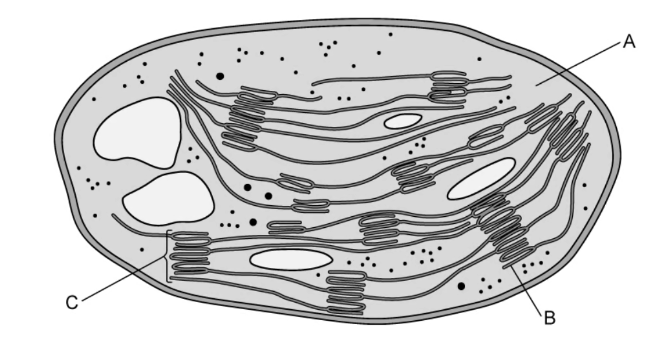a)
The diagram shows an electron micrograph of a chloroplast.
Annotate the diagram with the letter X to show the location of the light dependent stages of photosynthesis.

[1 mark]
b)
The photolysis of water is an important part of the process of light dependent stages of photosynthesis.
Describe what happens in the photolysis of water.
[2 marks]
c)
Chloroplasts contain more than one photosynthetic pigment.
Suggest why chloroplasts contain more than one photosynthetic pigment.
[1 mark]
d)
Describe a structure of the chloroplast that enables maximum absorption of light.
[2 marks]
a)
The diagram below shows the Calvin cycle.
State the name of enzyme X shown in the diagram.

[1 mark]
b)
The molecules labelled Y and Z on the diagram are used to convert GP to TP.
Identify the molecules labelled Y and Z.
[2 marks]
c)
One sixth of the TP is converted into usable products for the plant. One of these is hexose sugars.
State two uses of hexose sugars by plant cells.
[2 marks]
d)
One sixth of TP is converted into usable products for the plant. The remaining five sixths remain in the Calvin cycle.
Explain why it is important that not all the TP is converted to usable products.
[2 marks]
a)
The diagram below shows some of the reactions taking place in the light dependent stages of photosynthesis.
State the exact location of the reactions shown.

[1 mark]
b)
Describe the process that occurs at location A in the diagram.
[2 marks]
c)
The diagram from part a) shows the electron transport chain in the light dependent reaction.
At stage B, the electrons are involved in a series of reactions fundamental in the process of chemiosmosis.
State the type of reactions that take place at stage B.
[1 mark]
d)
The diagram from part a) shows the movement of electrons through the electron transport chain.
i)
Identify the product labelled C.
[1 mark]
ii)
Describe the role of the electrons in the formation of product C.
[2 marks]



